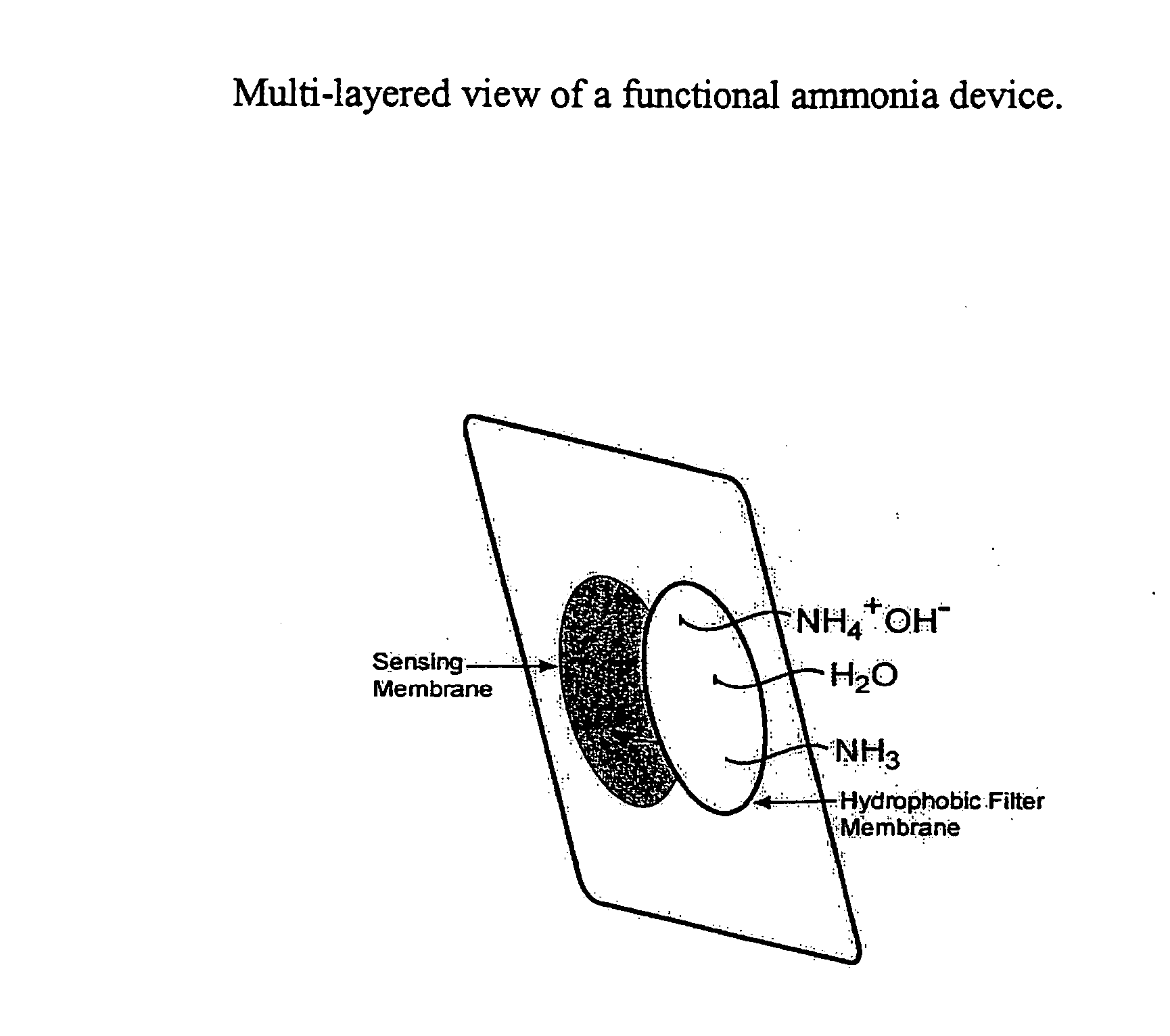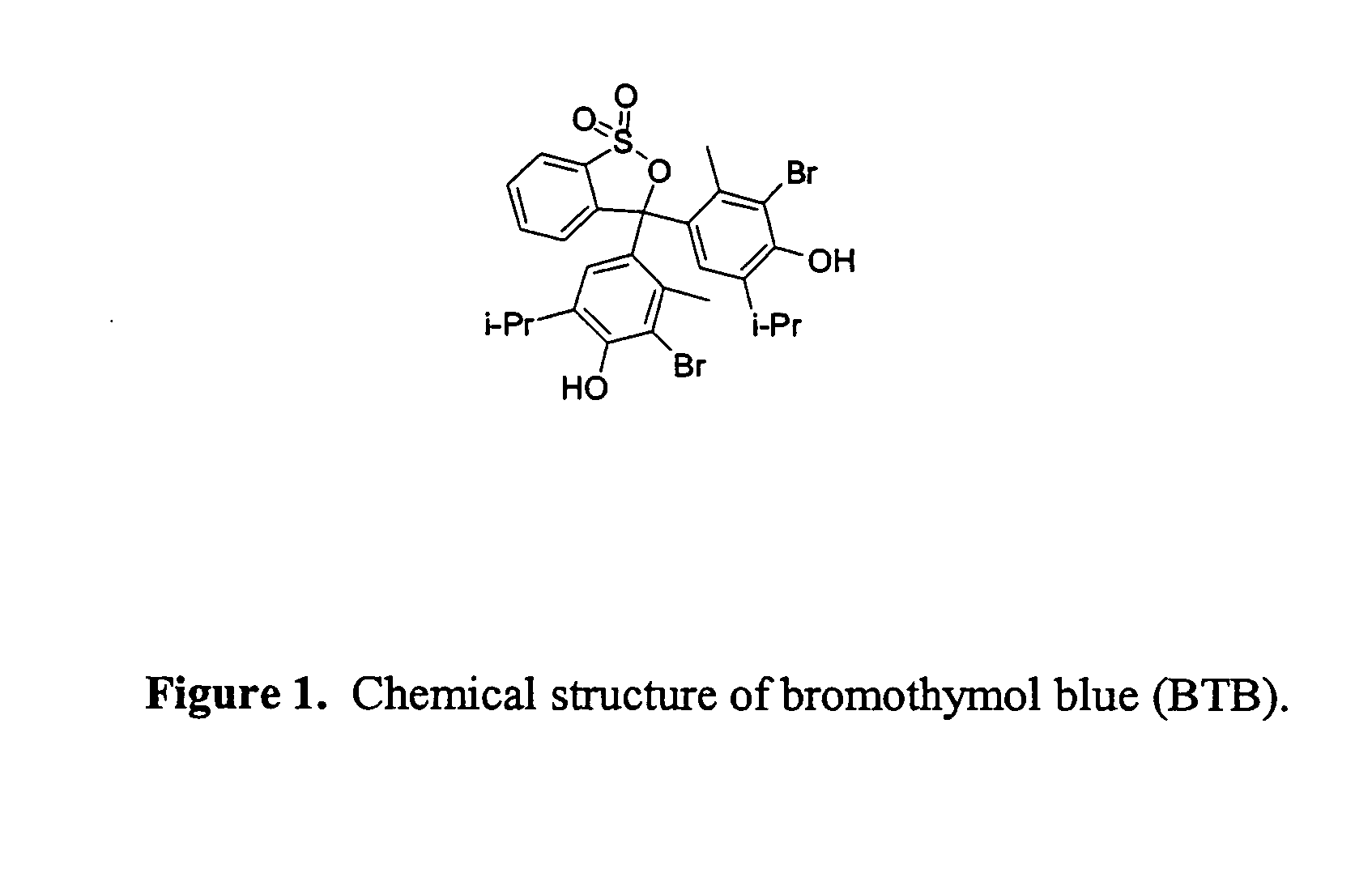Ammonia detection device and related methods
a detection device and ammonia technology, applied in the direction of instruments, specific gravity measurement, analysis using chemical indicators, etc., can solve the problems of ammonia being a ammonia is also a known toxic chemical to fish species, and ammonia is particularly troublesome to build up and presen
- Summary
- Abstract
- Description
- Claims
- Application Information
AI Technical Summary
Benefits of technology
Problems solved by technology
Method used
Image
Examples
Embodiment Construction
[0031] The present invention includes devices, systems, and methods for real-time, continuous detection (e.g., colorimetric detection) of gaseous ammonia (NH3). In an embodiment of the invention, the device includes a solid-state membrane material composed of multiple layers, including a first layer comprising an active membrane in which an indicator dye is immobilized to a polyamide or like membrane, and a second layer comprising a hydrophobic filter membrane. Upon submersion in an aqueous solution, gaseous ammonia diffuses through the filter membrane and contacts the active membrane of the device, causing the device to change color according to the concentration of dissolved ammonia.
[0032] The device can be used, for example, to determine ammonia levels in ornamental aquariums (e.g., 0-0.5 ppm NH3). The device can also be used in other ammonia containing aqueous environments, and therefore the technology can be specifically tailored to suit the concentration range and conditions ...
PUM
| Property | Measurement | Unit |
|---|---|---|
| pKa | aaaaa | aaaaa |
| density | aaaaa | aaaaa |
| concentration | aaaaa | aaaaa |
Abstract
Description
Claims
Application Information
 Login to View More
Login to View More - R&D
- Intellectual Property
- Life Sciences
- Materials
- Tech Scout
- Unparalleled Data Quality
- Higher Quality Content
- 60% Fewer Hallucinations
Browse by: Latest US Patents, China's latest patents, Technical Efficacy Thesaurus, Application Domain, Technology Topic, Popular Technical Reports.
© 2025 PatSnap. All rights reserved.Legal|Privacy policy|Modern Slavery Act Transparency Statement|Sitemap|About US| Contact US: help@patsnap.com



